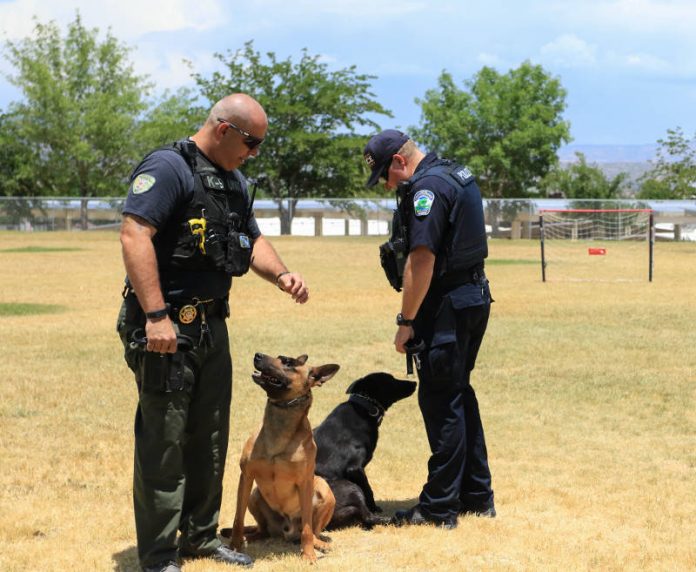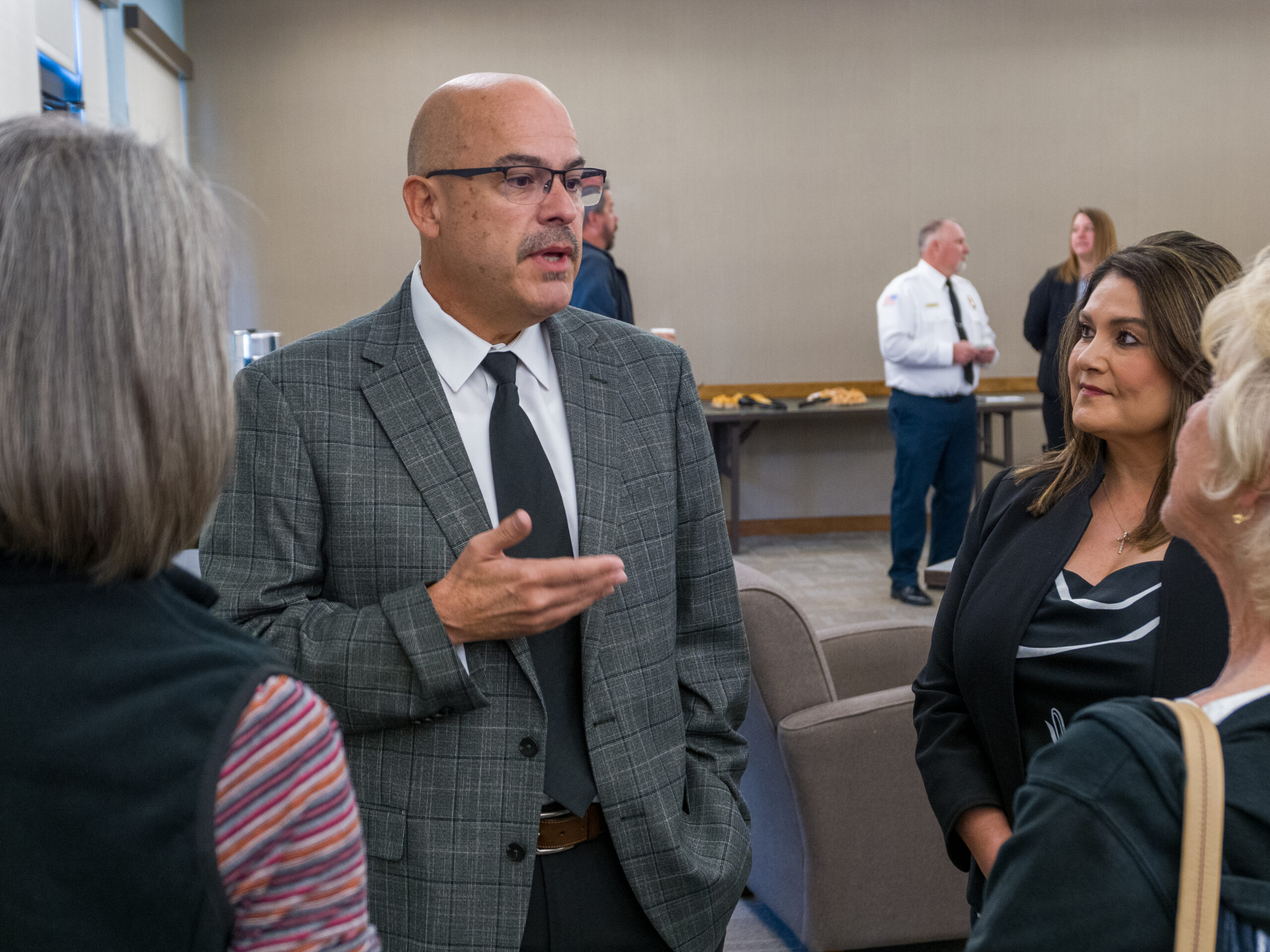If you’re walking around Cottonwood or Camp Verde and you come across a K-9 officer and his four-legged partner, feel free to ask if you can pet him or her.
The dog, that is.
It’s a change from business as it occurred only a decade ago, when most K-9 officers discouraged the public from interacting with their animals. Fear of bites as well as the threat of distracting the dog from its training revealed a belief about the dogs themselves: That they could not be trusted around the public.
“The training styles have changed,” Cottonwood Police Department K-9 Officer Cory Shilling said, adding that the philosophy among K-9 cops was once to train dogs for viciousness. “The dogs were mean. Now, that’s not the case …. If we have really good discipline, we can control the play and prey drive.”
Controlling that drive, Shilling explained, allows CPD and other local law enforcement agencies to incorporate their canine partners into the community, providing citizens access to an aspect of policing that might go unnoticed for fear of the animals. Seeing officers acting casual and friendly toward their dogs goes a long way to breaking down barriers that increasingly exist between law enforcement and their communities due to high profile negative media exposure.
“We try to interact,” Shilling said. “We try to socialize them as much as possible now …. What’s the greatest public relations tool for a police department? A dog.”
“The mindset’s changed,” Camp Verde Marshal’s Office K-9 Deputy Jeff Bowers said. “They can be social.”
Shilling’s partner, Kratos, is just under 2 years old. He’s a Dutch Shepherd-Belgian Malinois mix Shilling acquired from Holland in March. Despite 32 hours of training each month and a strict kenneling regimen, he’s still a bit puppyish. He likes to jump. At upwards of 80 pounds, he can easily knock an adult over.
That playfulness isn’t altogether a bad thing, however: According to Shilling, despite being named after the stern Greek god of power, Kratos was chosen for his sociable nature.
Bowers’ partner, Claymore, is a bit more reserved at 6-and-a-half years old, but he’s just as friendly and alert. A purebred Belgian Malinois, he’s been with CVMO since the age of 2. Like Kratos, he is a dual-usage canine, equally good at sniffing out narcotics and apprehending suspects.
The dogs’ monthly training is split into 16 hours of narcotics work and 16 hours of apprehension work. Shilling and Bowers train their partners together, meeting up weekly at Clarkdale-Jerome Elementary School for long days in the sun and sniffing through buildings.
Occasionally, they ask local businesses to help out. Clarkdale’s Olsen’s Grain allows Kratos and Claymore to train among its pet-food-scented aisles. Shilling and Bowers plant drug paraphernalia among the pet food, encouraging the dogs to discern narcotics from tasty treats.
“On the other hand, we’ll go out to Taylor Waste with them,” Bowers said, describing a scene that, for a dog, is tantamount to near-total sensory confusion.
A dog’s sense of smell is far superior to a human’s. Where people might just smell garbage, a dog smells nearly everything separately. They possess 300 million olfactory receptors, while humans possess a mere 6 million. Moreover, dogs’ noses operate in stereo, allowing them to “see” the direction a scent is coming from.
“It’s so key for us to train so they don’t mistake an odor,” Shilling said, using dryer sheets as an example: Because the items are so commonly used to mask the odor of drugs, K-9 officers must ensure they are not rewarding a dog for smelling dryer sheets rather than narcotics.
After all, as Shilling added, what Kratos or Claymore sniff out during a narcotics investigation may end up admissible in court. Shilling and Bowers have to be sure their partners are doing their jobs properly.
Shilling admitted that the job can be intimidating, especially during training. Training a dog to apprehend means training to bite. Standing still as 70 to 100 pounds of snarling muscle and teeth come at you, knowing it’s going to chomp down on your arm — even covered in a protective glove — is not an easy thing to do.
Nonetheless, both officers say they enjoy the work. Shilling used to train hunting dogs and grew to love the bond that was created between trainer and animal.
Bowers smiled and offered a simpler answer: “We get paid to play with a dog.”
Other local agencies that use dogs in police work include Yavapai County Sheriff’s Office and Sedona Police Department. YCSO employs two K-9 officers in the Verde Valley and SPD is looking to acquire a new police dog.



